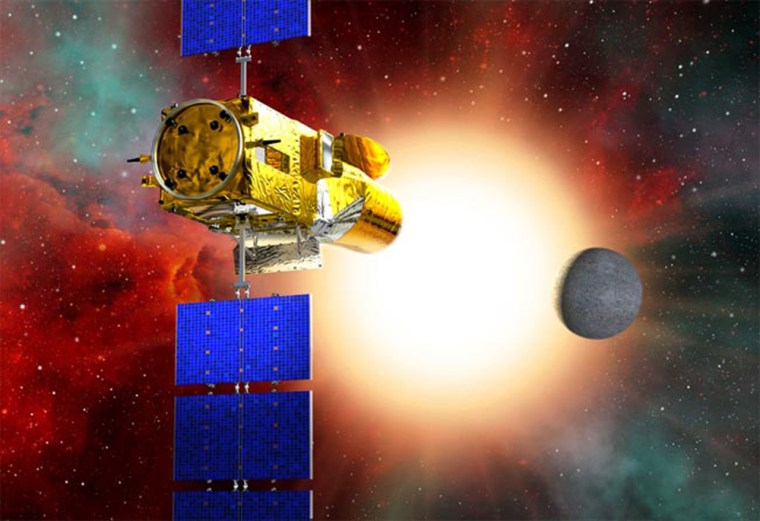European scientists launched a satellite on Wednesday to seek out Earthlike planets beyond the solar system and to explore the interior of stars, the French National Space Studies Center said.
The French project, dubbed Corot, sent into orbit a telescope capable of detecting planets smaller than those currently known, some maybe just a few times the size of Earth and rocky rather than gaseous.
“Our Corot satellite has been put into orbit today perfectly by a Soyuz rocket,” the French space center’s president, Yannick d’Escatha, said in a statement after the launch from Russia’s Baikonur Cosmodrome in Kazakhstan.
Corot — an abbreviation standing for convection, stellar rotation and planetary transits — is a project of the French space center, or CNES, in which the European Space Agency is participating.
Claude Catala, one of the researchers associated with the project, told France Info radio that “Corot will be able to find extrasolar planets of all sizes and natures, contrary to what we can do from the ground at the moment.”
“We expect to obtain a better vision of planet systems beyond the solar system, about the distribution of planet sizes,” Catala said. “And finally, it will allow us to estimate the likelihood of there existing planets resembling the earth in the neighborhood of the sun or further away in the galaxy.”
Planets have been found orbiting stars other than the sun, but they have never been seen. Instead, scientists have deduced they are there based on the stars’ “wobble,” the result of the gravitational pull of planets revolving around them.
Slideshow 12 photos
Month in Space: January 2014
Corot should be able to detect smaller, rocky planets by using a different method. It will measure the light emitted by a star and detect the drop in brightness caused when a planet passes in front of it.
Like the larger planets found so far, however, these new ones will have to be orbiting close to their star.
“Such planets would represent a new, as yet undiscovered, class of world that astronomers believe exists. With Corot, astronomers expect to find between 10 and 40 of them, together with tens of new gas giants,” ESA said in a statement.
ESA said Corot would also be used to track sound waves that resonate through a star, creating changes in brightness that should give scientists a glimpse into the interior of the stars themselves.
“These create a ’starquake’ that sends ripples across the star’s surface, altering its brightness. The exact nature of the ripples allows astronomers to calculate the star’s precise mass, age and chemical composition,” it said.
Over the next few weeks, Corot would be positioned by CNES controllers in Toulouse, France, d'Escatha said. "We are now impatiently awaiting the first measurements from Corot," he said.
In 2008, NASA is due to launch its Kepler probe, the first space telescope capable of detecting Earth-sized planets in similar orbits to ours, ESA said.
This report includes information from Reuters and msnbc.com.

